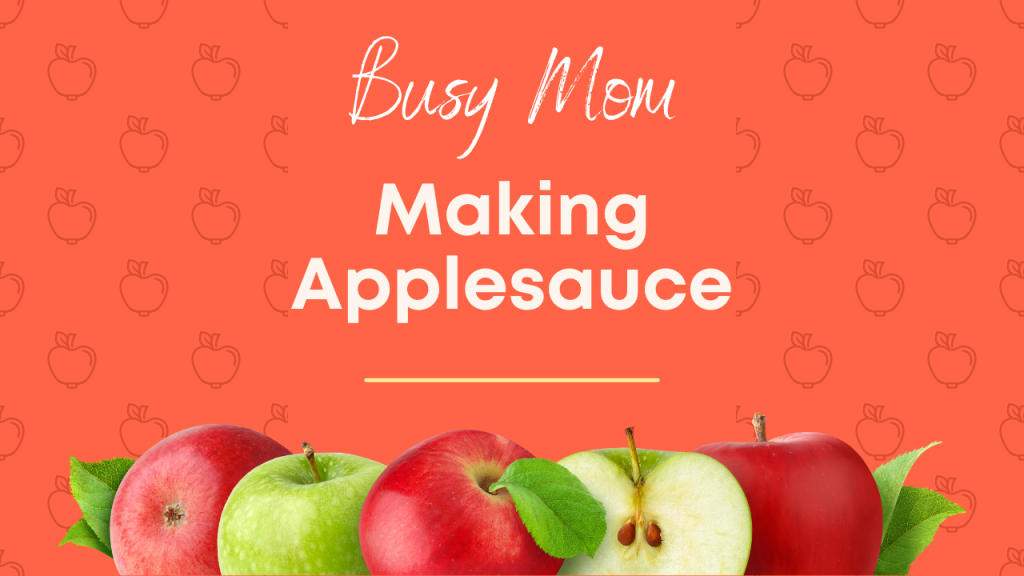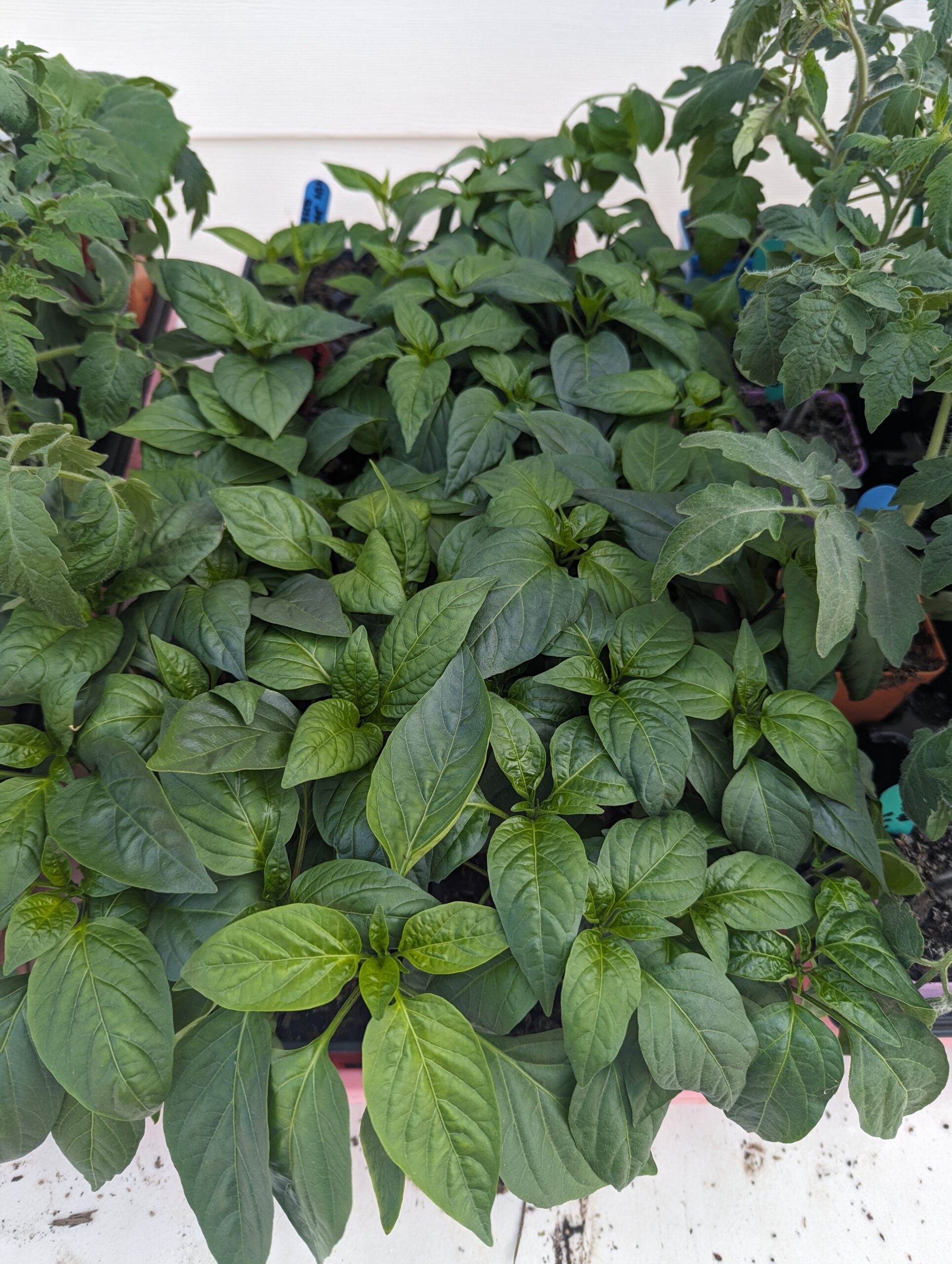It is very easy to make homemade applesauce. I am a very busy homeschool mom of 5 wonderful children. I care deeply about what foods they eat and also that I am teaching them what proper nutrition looks like.
While I am cooking in the kitchen, my children are constantly around my feet asking me questions on food, nutrition and how I’m making it. This is a great time to teach them and lay a foundation that will hopefully last through their lifetime with healthy eating skills.
I did not personally grow up with very great eating habits. I think I survived on microwave pizza and burritos with some PB&J’s thrown in.

Apple Nutrition
The old saying “an apple a day keeps the doctor away” is just a small testament to how nutritious these sweet, crunchy and versatile fruits actually are.
Apples have a great phytochemical content, or also known as phytonutrients, polyphenols, antioxidants, phytochemicals, and flavonoids. Most of this nutrition is actually in the skin of the apple, thus peeling your apple is not ideal.
Apples are rich in fiber which can help you feel full longer and sometimes help with diarrhea by bulking up the stool.
Research shows the antioxidants in apples can slow the growth of cancer cells. And they can protect the cells in your pancreas, which can lower your chances of type 2 diabetes.
There is so much more that scientists and nutritionists give apples credit for. Such as:
- Respiratory strength
- Cardiovascular health
- With asthma
- Bone health
- Weight loss
- Brain health and memory loss prevention
- Immune system
- Digestive health
Diabetics are able to eat apples because the sugar content within the apples does not take away fiber as other carbs tend to do.
Apples are great source of vitamin C, while being low in sodium, fat and cholesterol.
Any risks with apples?
While apples are an amazing food for nutrition, there are a couple risks that need to be addressed when sourcing and consuming the apples.
Apples are on the list of the “dirty dozen.” This means that the EWG detected pesticide residues in 90% of apple samples. What’s more, 80% of the apples tested contained traces of diphenylamine, a pesticide banned in Europe. It is best to buy organic apples whenever possible and then to always wash your apples before using.
Another potential risk is the seeds/core. You may have heard that eating this part of the apple can harm you because of potential cyanide risks. You would have to crush and eat many seeds for them to harm you. In fact, an average adult would have to eat at least 150 crushed seeds for a risk of cyanide poisoning. The seeds themselves are high in fiber and protein.

What you need to make homemade applesauce
It really does not take special tools to make homemade applesauce. You probably have everything you need to make it already in your kitchen.
- Basic stock pot, crock pot, or roaster oven that will fit the apples.
- Immersion blender, blender, or food processor.
- Knife
Optional items:
- Spiralizer
- Peeler
See my resources page for recommendations on these products.
Ingredients
Choosing your apples is the biggest step. The type of apples you use will determine if you need to add any sugar. Choosing a green apple, you will most likely want to add sugar to your homemade applesauce. If that is all that is available to you, that may be a good option.
If you source another type of apple that is sweeter, I will highly recommend you taste test after pureeing the applesauce before adding any sugar. We personally do not add any sugar to our apples.
You can also add to taste any seasonings like cinnamon, clove and nutmeg. Really the versatility of making homemade applesauce is all at the mercy of your taste buds.
Directions for homemade applesauce
- Core and chop up freshly rinsed apples. Peel the skins if desired or if canning the applesauce when done.
- Place chopped apples into a roaster oven, crock pot or stock pot on the stove.
- Add about 1 inch of water to the bottom of the apples. Just enough to help prevent the apples from sticking and burning.
- Cook low and slow until the apples become mushy. In a roaster oven I recommend 250 degrees.
- Use an immersion blender in the roaster/pot or pour apples into the blender or food processor to blend down to your preferred texture.
- Add sugar and spices to taste if desired. Bottle and store in the fridge, if not canning applesauce.
Homemade Applesauce

Here is a basic and easy way of making homemade applesauce from scratch. Just rinse, chop and go!
Ingredients
- Organic apples in bulk
- Water
- Sugar (optional)
- Cinnamon (optional)
Instructions
- Core and chop up freshly rinsed apples. Peel the skins if desired or if canning the applesauce when done.
- Place chopped apples into a roaster oven, crock pot or stock pot on the stove.
- Add about 1 inch of water to the bottom of the apples. Just enough to help prevent the apples from sticking and burning.
- Cook low and slow until the apples become mushy. In a roaster oven I recommend 250 degrees.
- Use an immersion blender in the roaster/pot or pour apples into the blender or food processor to blend down to your preferred texture.
- Add sugar and spices to taste if desired.
- Bottle and store in the fridge, if not canning applesauce.
Notes
I usually do no less than 20 pounds of apples at a time in my roaster oven. Consider the size of your pot when deciding how much to purchase.
I always recommend using organic locally sourced apples when possible but don't get held up on that. Use what you have available to you.
Adding sugar and spices is always to taste or completely omit.
I love the spiralizing apple tool when canning apples. It cores and peels all at once.
How do you make your homemade applesauce?
Let me know in the comments if you have made it differently or what you like to put into your applesauce. I always love to learn other ways to it.






